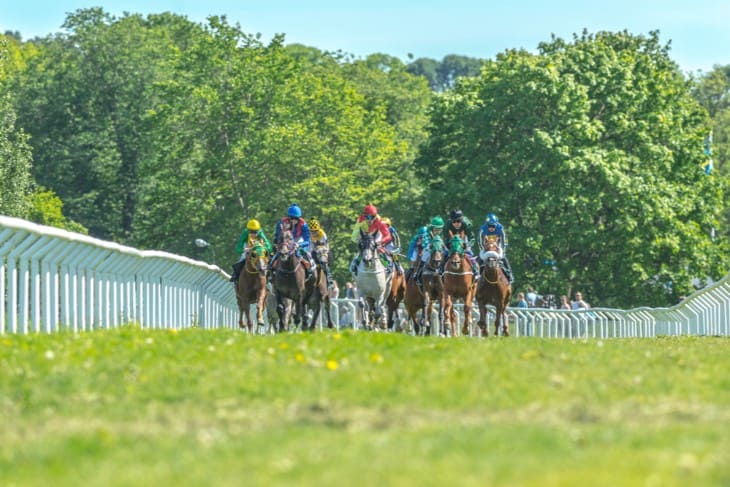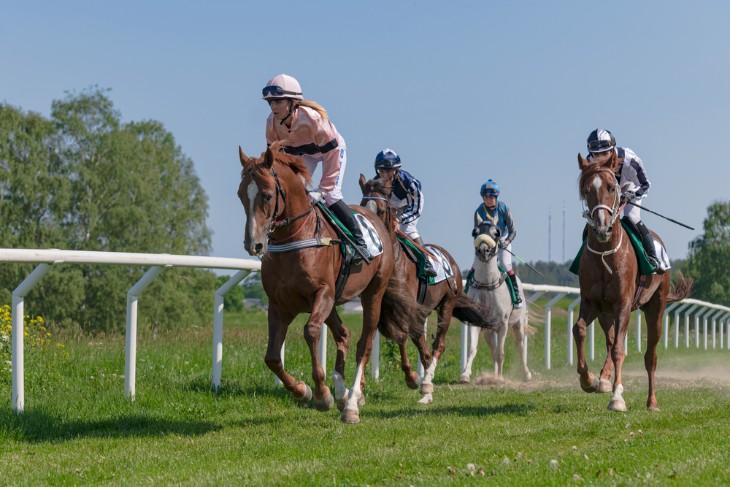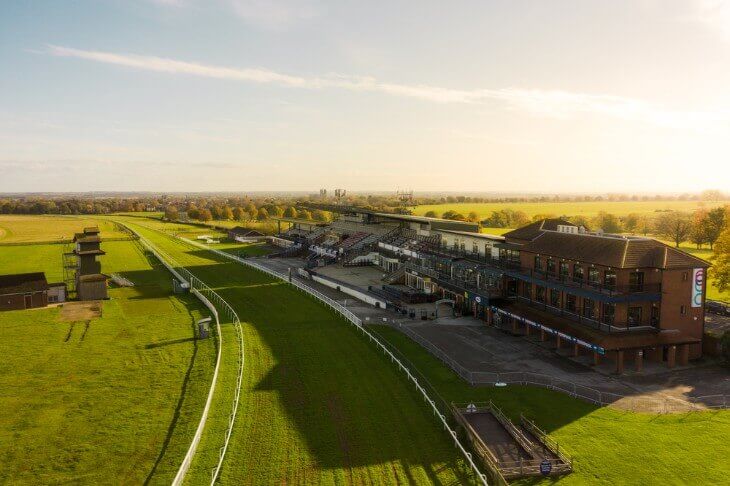- Bringing Together a Diverse History
- The Guiding Light: Objectives and Responsibilities
- A Journey Through Time: The Evolution of Racing Regulation
- A Well-Oiled Machine: The BHA's Structure and Composition
- The Gatekeepers: Licensing and Integrity Assurance
- Equine Guardians: The BHA's Commitment to Animal Welfare
- Fair Play Champions: Enforcing the Rules with Unwavering Resolve
- The Stage Masters: Overseeing Racecourses and Fixture Allocations
- Financial Stewardship: Funding the Guardians of the Sport
- Conclusion
Horse racing holds a place in culture going beyond just a sport to become a treasured tradition deeply ingrained in the nation's identity. With the sound of hooves hitting the ground the British Horseracing Authority (BHA) stands as a guardian ensuring the integrity, welfare and longevity of this activity. Whether at racecourses or humble stables the BHAs impact is felt across the world of horse sports.
Bringing Together a Diverse History
For years overseeing horse racing in Britain involved a mix of organisations and scattered authorities creating a disjointed landscape filled with inconsistencies and lacking a unified vision. The establishment of the BHA in 2007 marked a turning point by uniting these regulatory aspects under one strong entity.
Emerging from the legacy of its predecessor, the British Horseracing Board (BHB) the BHA took on its duties with a focus on transparency and accountability. Its establishment was a result of efforts as stakeholders from all corners of horse racing came together to support this unified governing body.
Since its inception the BHA has been dedicated to rebuilding trust in the sport by maintaining standards and paving the way for an enduringly thrilling future.The BHA with its powers and steadfast dedication has established itself as the cornerstone of British horse racing.
- The BHA's establishment marked the culmination of a centuries-long quest for a centralised regulatory body in British horse racing.
- Its creation brought together stakeholders from across the racing spectrum, fostering a spirit of collaboration and shared purpose.
- The BHA's mandate was rooted in transparency, accountability, and an unwavering commitment to upholding the sport's integrity.
The Guiding Light: Objectives and Responsibilities
Being the overseer of horse racing the BHA carries important duties crucial, for the sports well being. At its core mission is the safeguarding of horse racings reputation ensuring it remains a symbol of excellence, integrity and fairness.
The BHAs goals are varied. Include overseeing regulations ensuring integrity, caring for horses welfare, managing fixtures and promoting the sport itself. These key aspects are intricately integrated into the authorities operations, which follow an all encompassing approach to governance.
From developing rules and guidelines to enforcing doping measures the BHA is dedicated to maintaining the sports integrity without faltering. Its stewards and disciplinary officials work diligently to uphold play standards in every race guaranteeing that each event is conducted with respect for sportsmanship and adherence to established norms.
- The BHA's primary objective is to safeguard the reputation of British horse racing as a bastion of excellence and fair play.
- Its responsibilities encompass regulatory oversight, anti-doping measures, equine welfare initiatives, and the promotion of the sport.
- The BHA's stewards and disciplinary officials are the front-line enforcers of fair play, ensuring that every race is conducted with integrity.

A Journey Through Time: The Evolution of Racing Regulation
The regulation of horse racing in Britain has a history characterised by change over many years. Starting with The Jockey Club's efforts at governing in 1750 the evolution towards a regulatory body was a lengthy process. Although The Jockey Club played a role in setting standards and supervising races it lacked the power needed for effective regulation. This gap led to the emergence of bodies, with their rules and governance styles.
As the industry realised the importance of coherence and efficiency steps were taken to unite these bodies resulting in the formation of the BHA. This significant development marked a beginning where regulations were consolidated under one authority.
- The earliest notable attempt at centralised racing regulation came with the founding of The Jockey Club in 1750.
- Regional bodies emerged, each governing racing activities within their respective jurisdictions, leading to a fragmented regulatory landscape.
- The formation of the BHA in 2007 marked a turning point, consolidating regulatory powers under a single, independent governing body.
A Well-Oiled Machine: The BHA's Structure and Composition
The British Horseracing Authority runs like an oiled machine, with a structured setup to guarantee effective governance. Leading the way is a Board of Directors made up of professionals, from backgrounds each contributing their own expertise.
This leadership goes beyond horse racing incorporating business know how, skills and a deep understanding of the sports industry. The range of viewpoints helps in making decisions. Ensures that the BHA can adapt swiftly to the changing dynamics of the sport.
Below the Board specialised departments operate smoothly, each focusing on aspects of racing regulation. From licensing and integrity to equine welfare and racecourse services these teams work diligently to uphold the BHAs standards and strive for excellence, in all areas.
- The BHA's Board of Directors comprises a diverse array of professionals, blending expertise from within and beyond the racing world.
- Specialised departments focus on critical areas such as licensing, integrity, equine welfare, and racecourse services.
- This structural design ensures that every aspect of racing regulation receives the attention and expertise it deserves.
The Gatekeepers: Licensing and Integrity Assurance
In the realm of horse racing maintaining honesty and trustworthiness is crucial. The BHA serves as a guardian making sure that only those who uphold the standards of ethics and professional expertise are allowed entry into the sports inner circle.
The process of obtaining a licence is thorough involving background checks and examinations for applicants. Everyone involved in the sport from jockeys and trainers to owners and stable workers undergoes intense scrutiny to preserve the integrity of horse racing. Credentials, practical experience and compliance with the BHAs regulations are carefully assessed with no room for compromise.
Yet the BHAs watchfulness goes beyond licensing. Its specialised integrity team operates effectively like a tuned mechanism constantly monitoring for any hints of wrongdoing such as corruption or match fixing. Confidential information is collected, analysed diligently and swift action is taken to ensure fair play remains unblemished, in horse racing.
- The BHA's licensing process is a stringent one, subjecting applicants to thorough vetting and scrutiny.
- A dedicated integrity unit monitors the sport for any signs of corruption, match-fixing, or other unethical practices.
- Rigorous anti-doping measures, including regular testing, ensure a level playing field free from performance-enhancing substances.
Equine Guardians: The BHA's Commitment to Animal Welfare
In the world of horse racing taking care of these animals is a priority and the BHA serves as a steadfast protector. With respect, for the horses that drive the sport forward the organisation has put in place a system to ensure their welfare from the track to their days of retirement.
Working closely with veterinarians and key figures in the industry the BHA has set rules for maintaining the health and safety of horses. These guidelines cover every aspect of a racehorse's life, including training techniques, living conditions in stables, transportation and medical attention. Regular checks and assessments guarantee compliance with these standards leaving no room for any oversights that could put the well being of horses at risk.
The BHAs dedication goes beyond their time on the racetrack. By partnering with groups focused on rehoming and retraining the organisation helps racehorses transition into new careers or peaceful retirements. This ongoing commitment to their long term happiness showcases the respect that the BHA holds for these valued equine companions who play a role in making horse racing possible.
- The BHA collaborates with veterinary experts to establish comprehensive guidelines for equine health and safety.
- Regular inspections and audits ensure strict adherence to these welfare standards across the racing industry.
- Partnerships with rehoming and retraining organisations facilitate smooth transitions for retired racehorses into second careers or peaceful retirements.
Fair Play Champions: Enforcing the Rules with Unwavering Resolve
In the world of high stakes horse racing fair play isn't a quality. It's a crucial principle that upholds the integrity of the sport. The BHA is an advocate for this belief ensuring that the rules are followed with determination that earns respect from all sides.
At the core of the BHAs commitment to play are a group of stewards who carefully monitor every aspect of each race. These seasoned professionals keep an eye on jockeys and horses on the lookout, for any signs of wrongdoing or unsportsmanlike behaviour. When issues arise they conduct investigations. Apply appropriate penalties to maintain fair competition.
Supporting the stewards is a team of officials who work to prevent rule violations and misconduct. Their procedures are both systematic and adaptable allowing individuals to present their arguments while following process. Penalties, which can include fines, suspensions, disqualifications or licence revocations are handed down fairly to uphold the BHAs dedication to fairness and responsibility.
- A dedicated team of stewards monitors every race, keeping a watchful eye for any signs of foul play or unsportsmanlike conduct.
- A disciplinary panel handles rule violations and misconduct, ensuring due process and appropriate sanctions.
- Educational programs and workshops promote a culture of fair play and ethical behaviour within the racing community.

The Stage Masters: Overseeing Racecourses and Fixture Allocations
Racecourses serve as the venues where the excitement of horse racing comes alive and the BHA takes charge as the conductor orchestrating a series of events that captivate audiences across the country. With an attention to detail and a profound grasp of the sports intricacies this authority exerts its influence over racecourses and scheduling with precision and foresight.
In a ballet the BHA carefully evaluates proposals from racecourses competing to host events considering various factors to craft an ideal racing calendar. Elements such as diversity, track conditions, historical significance and spectator capacity all factor into this decision making process with the aim of curating a varied and captivating array of races.
Yet the BHAs responsibilities extend beyond assigning fixtures. It works hand in hand with racecourses to provide guidance and support in enhancing the racing experience, for spectators. Facilities are. Upgraded safety and comfort are prioritised and innovative strategies are explored to engage a generation of fans while ensuring that the timeless appeal of this sport endures.
- The BHA meticulously evaluates proposals from racecourses to host fixtures, considering factors like geographical spread and track conditions.
- Close collaboration with racecourses aims to enhance the racing experience for attendees, from facility improvements to increased spectator engagement.
- Strategic fixture allocation ensures a balance between the number of races and the availability of quality racehorses, maintaining competitiveness.
Financial Stewardship: Funding the Guardians of the Sport
Being the protector of horse racing comes with responsibilities, for the BHA requiring a constant flow of financial support. The way funds are gathered by the authority is like a tapestry woven together by contributions from racecourses, owners, trainers and betting companies.
Racecourses play a role in sustaining the BHAs activities by giving a portion of their earnings based on the number and value of races they host. This fair system ensures that those who benefit most from the sport also carry their share of responsibility.
Owners and trainers also play their part by paying fees for services provided by the BHA, such as horse registration, licensing and race participation. Similarly betting companies contribute through a levy on their profits made from horse racing bets since their success is closely tied to that of the sport.
The BHA handles its finances with planning and utmost transparency. Funds are allocated thoughtfully with areas such as integrity measures, equine welfare projects and promotional efforts to attract new fans taking priority. Through reports showcasing income and spending the authority builds trust and accountability, among stakeholders and the public community.
- Racecourses contribute based on the number and value of fixtures they host, ensuring an equitable distribution of the financial burden.
- Owners, trainers, and betting operators contribute through fees and levies, recognizing their vested interest in the sport's success.
- Transparency is a guiding principle, with annual reports detailing the BHA's financial activities and responsible allocation of resources.
Conclusion
The British Horse Racing Authority is seen as a symbol of honesty, a protector of tradition and a guide for the future in the captivating world of horse sports. Starting from its origins as a presence in a diverse environment the BHA has grown into a strong entity that commands respect and holds sway over all aspects of the sport. By staying true to play prioritising horse well being and overseeing racecourses and events strategically the BHA has solidified its position as the overseer of British horse racing. Its complex array of duties ranging from licensing and upholding integrity to managing finances demonstrates the authority's approach to governance with a focus on achieving excellence.







